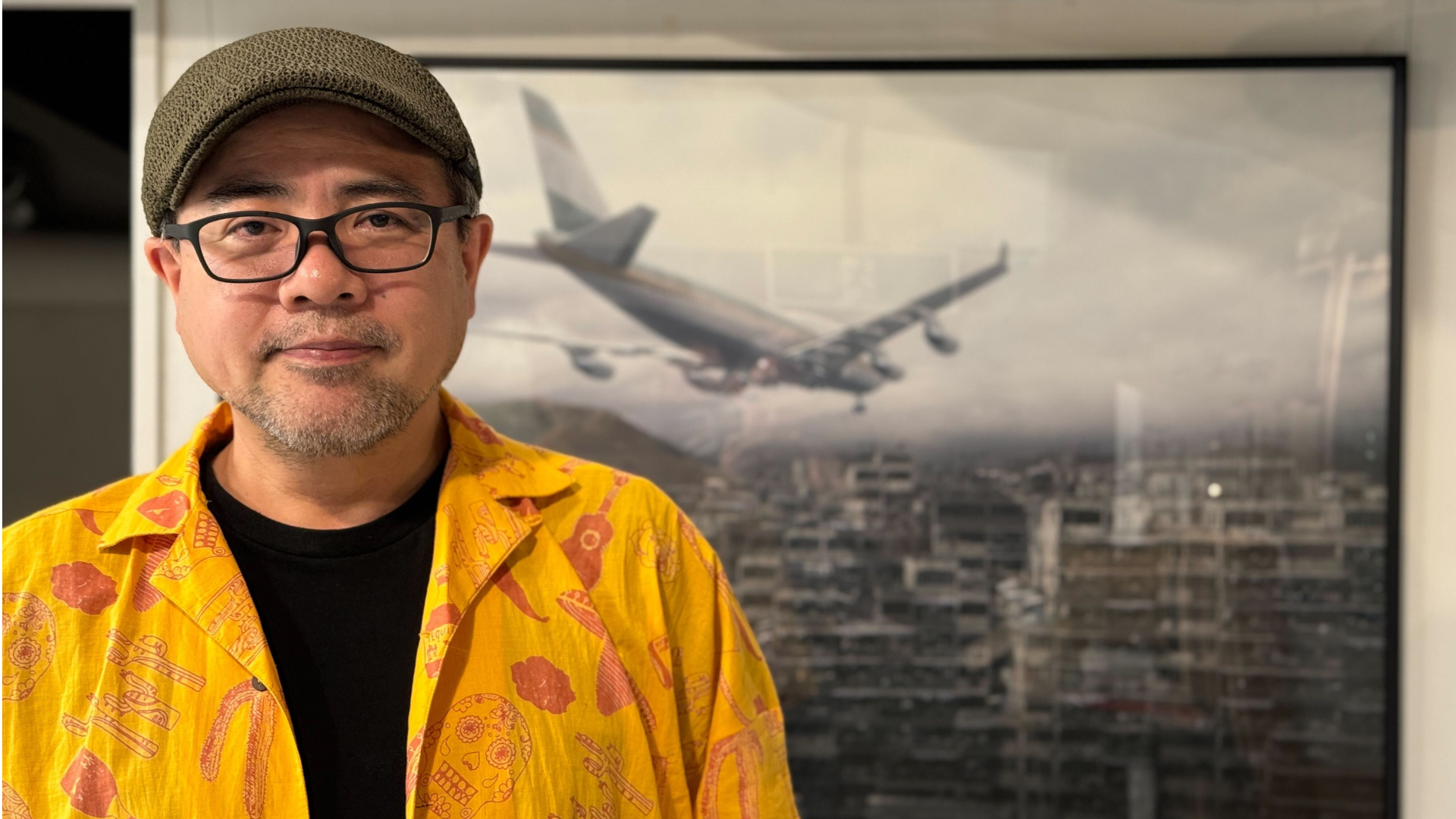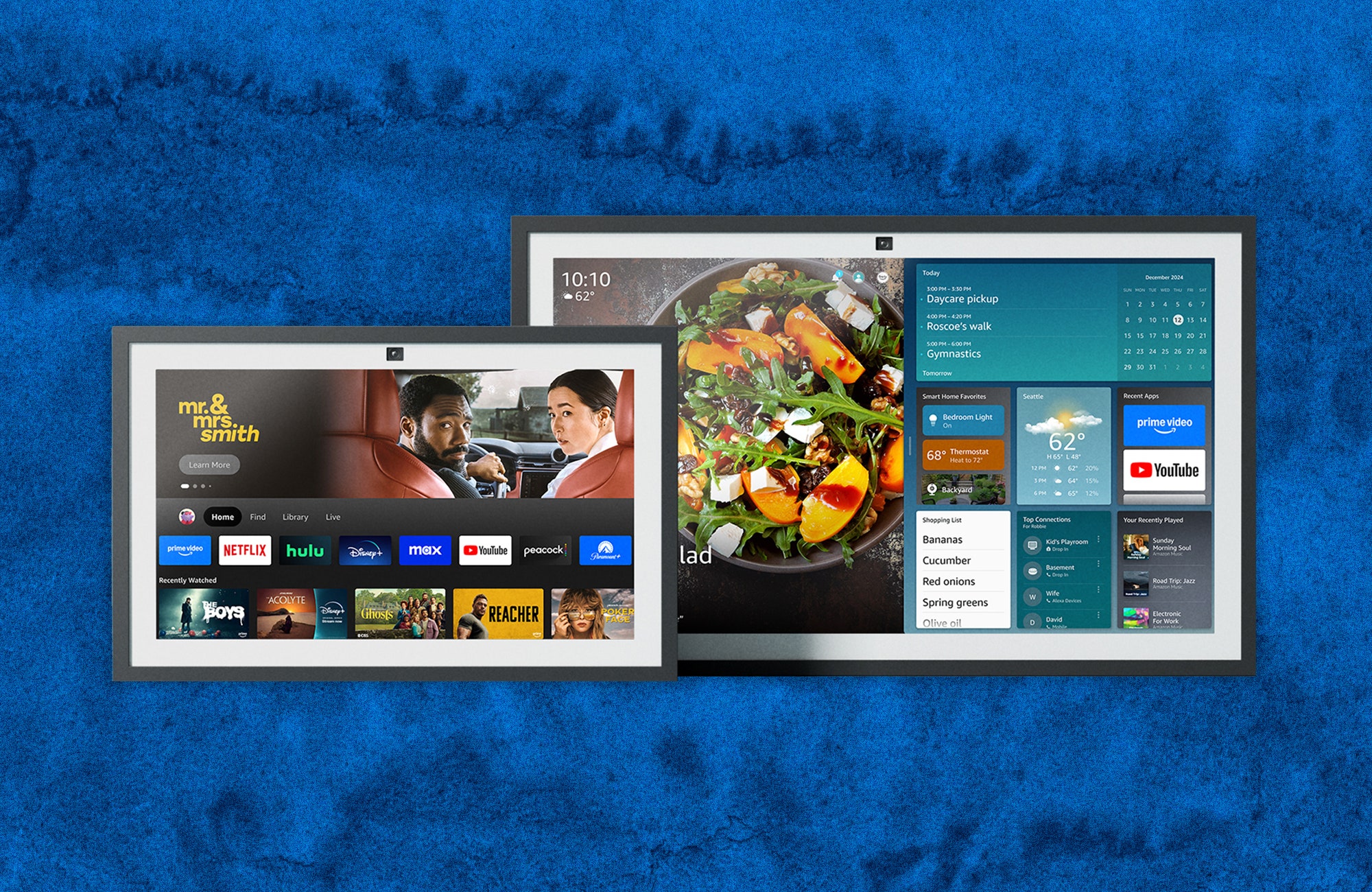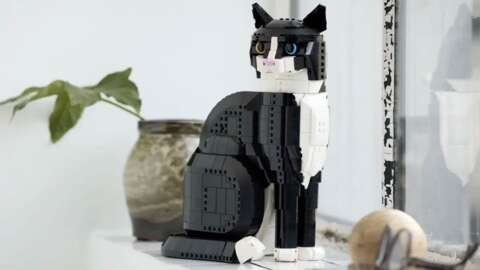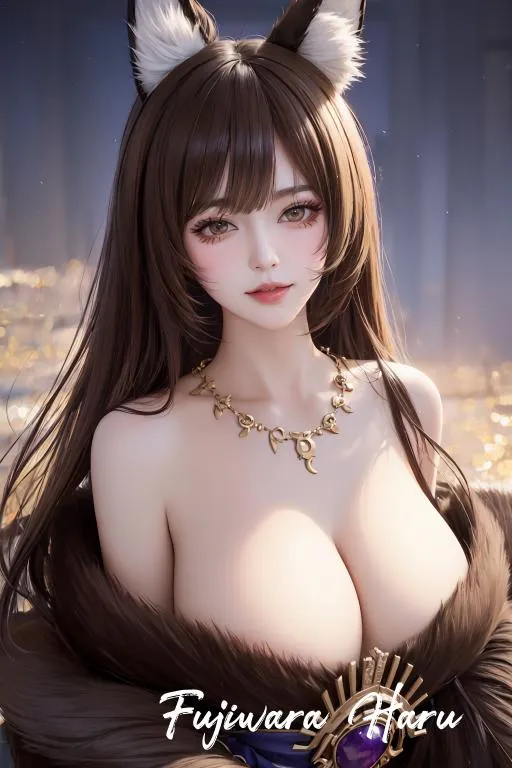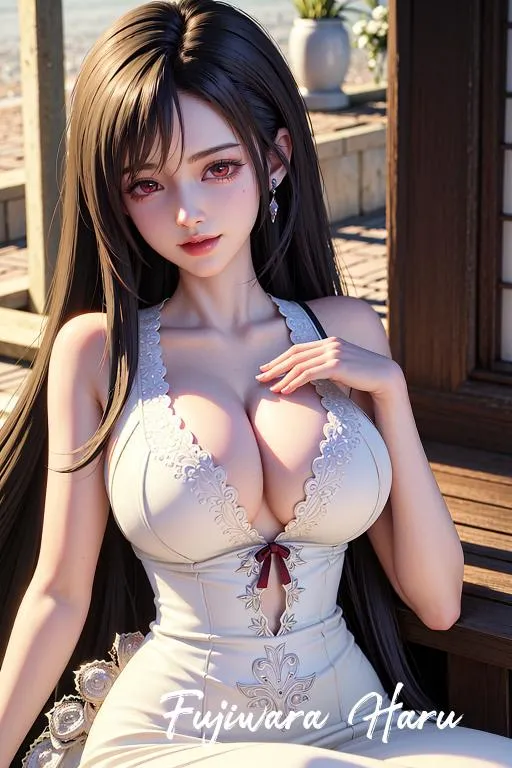In December 2020, Keiichiro Toyama announced the establishment of Bokeh Game Studio, a new development company he founded together with select cohorts from his days at Sony’s now defunct Japan Studio. With Toyama’s resume including beloved titles like the original Silent Hill, Siren and Gravity Rush, many fans had been looking forward to seeing his next creation.
Now, four years later, Slitterhead is ready to release this November as Bokeh Game Studio’s debut title. I was fortunate enough to actually play the horror action adventure game, and you can read my impressions in our exclusive preview article. Following my session with the game, I interviewed Toyama as well as producer Kazunobu Sato and game director Junya Okura.
Many fans have been eagerly awaiting a new horror experience from you. After playing the demo, I thought it was rare for a game that leans so heavily on horror elements to have a melee combat system. Could you tell us the reason behind this?
Keiichiro Toyama, Founder, Bokeh Game Studio: We wanted players who enjoy modern action games to be able to enjoy Slitterhead, so we aimed for a game that is easy to familiarise yourself if you are used to playing recent games.
Possessing and controlling multiple different characters functions as Slitterhead’s key mechanic. How did you come up with this idea?
Toyama: With Slitterhead, we wanted to reinterpret the concept we originally had for Siren. Over the years, Siren has become somewhat of a cult classic, and I’m always honored when I hear people say they want to see it get revived. In Siren, you could dive inside the brain of other characters through a feature we called sightjacking. We wanted to evolve this idea by making it possible to possess and freely move around as other characters. This became the core of Slitterhead’s game design.
It’s unique and interesting from a gameplay perspective, but when you’re continuously possessing different characters, doesn’t it become difficult for the player to know what or who they are? How did you approach this idea from a narrative standpoint?
Toyama: That’s something we’ve become quite good at through our previous games. While there are elements that confuse the player, I am confident that players will enjoy Slitterhead’s story. At first you might not be sure of what you are, but as you advance through the game there's an interesting narrative and relatable characters.
While you are reinterpreting Siren’s game design in a modern way, the setting of Slitterhead is quite different from Siren’s Japanese village.
Toyama: That’s right. Slitterhead is set in a fictional Asian city during the early 1990s. Nostalgia for a world long gone is one of the main themes we had for the city. For example, many of the neon sign boards that used to be so common in Asian cities are getting removed these days. If you take a city like Hong Kong, you can see how much has changed. The first time I visited Hong Kong was in the 2000s. If I had gone earlier, I could have seen airplanes fly right above the city to reach Kai Tak Airport, which was located in the middle of the city. Drawing inspiration from places we would have liked to see or go is something we did a lot in Slitterhead.
Wasn’t it difficult to recreate sights and locations that no longer exist?
Toyama: It was definitely challenging as there wasn’t always a lot of documentation to work from. That said, our environmental artists were extremely passionate about recreating the scenes they were inspired by. Some members even applied to work with us because they wanted to design a city like this. Some of them were so devoted that they put real-world details into the game that I’m not even familiar with!
Were you also inspired by Hong Kong movies from the ’90s?
Toyama: Definitely. When I was a student, Wong Kar-wai’s movies became popular. His movies changed the way I looked at Hong Kong cinema. When I was a kid, Jackie Chan movies were the first thing you would think about. I was captivated by the modernness and beauty of Wong Kar-wai’s movies.
I was impressed by the NPCs walking the streets. They were really detailed and their fashion and hairstyles perfectly matched the city’s atmosphere. I was even more surprised to actually be able to possess and walk around as them.
Toyama: That’s great to hear. I think there are not many games that allow you to control this many characters. In the original proposal, I wrote that every person in the city should be a playable character. For game design reasons, we had to limit the amount of characters you can possess, but it’s still a lot. The motion differs depending on the character, so I hope players will enjoy feeling the difference.
It’s a nice touch that the character you are possessing at that moment also appears during cutscenes.
Toyama: Yes, we tried to do that as much as possible. There were a lot of difficulties upon doing this. For example, weird stuff would happen for characters with different heights.
I got to play the beginning of the game which had me explore the city, and later the insides of a condominium building. Is Slitterhead an open world game, or does it take a stage-based structure?
Toyama: It’s stage based. Everything takes place within the city, but depending on the stage you get to see different situations and can experience the city from different angles.
How long does the average stage take, and how long does it take to beat the entire game?
Toyama: Stages are about 30 minutes long. It should take players around 15 hours to see the credits roll. After that, you can enjoy the remaining challenges.
The stages I got to play were both during the nighttime. Are there any stages that play out during the day?
Toyama: We narrowed the situations down to nighttime. It matches the atmosphere of the city better, and if we were to change the time of the day we would also have to change the atmosphere of characters, which would be a lot of work. Also, daytime situations are more challenging to fit in a horror game.
Kazunobu Sato, Producer: In the original proposal we did have some daytime situations, but to make the experience more focused we decided to cut them.
Toyama: I think we had about two or three times the amount of situations in the original proposal.
Slitterhead has impressive city environments, horror elements, is narrowed down to nighttime, and you can reach the top of buildings. All this reminded me of Tango Gameworks’ Ghostwire: Tokyo. Did you notice the same similarities when that game was released in 2022?
Toyama: Yes. Both (Shinji) Mikami and producer (Masato) Kimura are good friends of ours. When I heard that they went through twists and turns to come up with the game they did, it was easy for me to understand. I was shocked how well Ghostwire: Tokyo’s Shibuya was crafted though… It’s kind of scary to think that people expect something of that quality nowadays.
I personally thought that Slitterhead’s city had a similar amount of detail to it.
Sato: That’s great to hear. When Ghostwire: Tokyo released, we were in the midst of developing Slitterhead. Their final product was something that felt quite close to what we were doing. Ghostwire: Tokyo is a first-person shooter that takes place in Tokyo, while Slitterhead has melee combat in a culturally Chinese setting, so they’re obviously very different games. That being said, as a product there’s definitely a similarity which I think works to our benefit. During presentations etc, mentioning how Ghostwire: Tokyo turned out was a convenient way for us to convey the image of Slitterhead.
The monsters in Slitterhead are based on Yegouzi, a supernatural being in Chinese folklore. How did you come up with this?
Toyama: I was inspired by monsters that appear in Japanese comics. Monsters that eat humans appear quite often, but that alone wouldn’t differentiate us enough. After looking into it, I learned about Yegouzi, a Chinese monster that eats human brains, so I decided to flesh out that idea.
Did the idea of Yegouzi come first, or did you already have the idea of an Asian city before that?
Toyama: The city came first. I wanted to make a game about an Asian city in which a mysterious incident occurs. When searching for an enemy that matches this setting, I learned about Yegouzi.
Is there a wide array of enemy types in the game’s different stages?
Toyama: We developed a very rich and complex design for Yegouzi. We’re using this design as the base for all enemy types, but we created a lot of variation by giving it different looks, abilities and so on. Rather than creating a wide variation of enemy’s from scratch, we’re using one well-developed design in different ways. Slitterhead is Bokeh Game Studio’s first game, so this approach was more realistic for us.
The city of Slitterhead is very detailed and well designed. Why did you decide to have an action-focused experience rather than focusing more on adventure and exploration?
Toyama: With games like FromSoftware titles, many gamers today are used to playing challenging and hardcore games. With that in mind, I thought that as long as we make the action feel good there would be the potential for more players to be interested in our game. Since I’m known as the creator of Silent Hill, I’m aware of the fact that many people are hoping for something closer to a horror adventure game. That makes me very honored, but the problem is that horror adventure games are kind of similar to extremely spicy food. People that are into it love it, but other people don’t really bother to try it out.
That’s why we decided to keep the essence of horror games while making a game that feels good to play. Of course we could have made a horror adventure game, but since many of our team members worked on the Gravity Rush series, we already had a team that knows how to develop good action gameplay. It is important to know what kind of game you want to make, but thinking about the potential and strengths of your team is important as well. With the team we currently have at Bokeh Game Studio, making a game focused on action just seemed like the right choice.
While Slitterhead is mainly focused on action, I did get to enjoy some exploration elements during my playtime as well. The game started with a section in which I had to follow a visualized trail of scent as a stray dog, and later I had to roam the city to find lost memories of the spirit that I was controlling. What other types of exploration can players expect?
Sato: While indeed action is the game’s main element, there is some exploration as well. For example, there’s a part in which Yegouzi is hiding in human form, and you have to find out which human body it is hiding in.
Junya Okura, Director: Since you don’t know what human body Yegouzi is hiding in, you have to go about and find out by talking to people and finding traces that lead to it. It’s kind of like an investigation part.
Does the game have any side quests?
Toyama: With the limited budget we have, we decided to focus on the main experience rather than expanding the experience with optional content.
During combat, you can attack, block, dodge and deflect, covering all the standard bases for a modern action game. What is it that makes Slitterhead’s combat unique?
Toyama: The fact that the character you’re controlling constantly changes. The main concept was my idea, but Okura – who was also the lead designer for Gravity Rush – created the game system based on that concept.
Okura: Toyama said that he wanted me to utilize the possession mechanic as much as possible. It made me think of what would happen in a game in which you can freely possess different characters in a city. What kind of gameplay could we create based on that idea? Actually, we have a few main characters as well, and I came up with a system in which you switch between them. These main characters all have different characteristics and can use different skills.
I got to play as a female character with claws as well as a character that uses Chinese martial arts. It was fun to be able to enjoy different movesets.
Toyama: Thank you. We gave each of these characters their own background. For example, one is a homeless guy who used to be a professional boxer. The motion of their attacks match their backgrounds, so I hope that players can enjoy that variety. Also, in the game’s proposal I wrote that the human body is weak and should be disposed of as you fight. This is something that Okura implemented in the game very well.
Okura: The game expects you to dispose of the bodies that you have controlled. It works in your advantage to sacrifice them as you play.
Toyama: We noticed that many of the test players found this hard to get used to.
You get attached to the old lady you’re controlling, right?
Okura: Yes, you get attached to them and try to keep them alive. But actually, sacrificing them works to your advantage.
Sato: When playing with the same mindset as in other games, you tend to try to defeat the enemy using the same character. That’s why we make it clear during the tutorial that it’s OK to sacrifice bodies. It’s interesting to see players trying to protect the lives of the characters they control at first, and how they start to care less and less as they get used to the game.
I played the game on Easy mode and had no real difficulties defeating the game’s enemies. How different are the Normal, Hard and Nightmare difficulty modes?
Okura: Depending on the difficulty mode, the frequency and damage of enemy attacks change. That means that combat becomes more challenging, but adventure parts stay the same. Normal is the difficulty that we think will suit the average player best, while Hard is the difficulty we originally wanted to go for. Nightmare is for people who want a real challenge. Actually, I’m making that one for myself! But it still isn’t so difficult that players won’t be able to beat the game.
Sato: Are you sure about that? For me it’s too difficult!
Okura: Well, I do die a few times myself (when playing on Nightmare mode)...
What were some of the main inspiration sources for Slitterhead?
Toyama: There’s a lot, but I was especially inspired by manga like Gantz, Parasyte and Tokyo Ghoul. A lot of people die and the essence of horror is there, but at the same time these manga are focused on battle action, which I think makes them more accessible. Horror is quite a hardcore genre, so I looked at how these manga made horror more approachable for a wider audience. They have horror-like situations in which you’re worried that a certain character might die soon, but at the same time the battle action component makes it more entertaining for a casual audience. This is an approach unique to Japanese manga that I haven’t really seen overseas, so I wanted to bring that essence to video game format.
You’re collaborating with Silent Hill composer Akira Yamaoka for the first in a long time. How did this come to be?
Toyama: We had been saying to each other that we wanted to do something together again for a long time, and with Slitterhead we finally got the chance. Working together with him again made me realize just how much of a genius he is. I hardly ever had to direct him into the right direction. Every song he composed was a perfect fit. For Slitterhead, he didn’t just compose music but was in charge of the game’s sound as a whole. The Cantonese pop song you hear during the opening of the game was composed by him as well. I really like that song. Yamaoka might be best known for dry rock music, but he’s actually really good at composing more ethereal songs as well. I think the latter is well represented in Slitterhead.
Slitterhead is set to release for not just current gen consoles and PC, but also PS4. Are there any differences between the PS4 version and other platforms?
Toyama: Slitterhead can be enjoyed in 4K with 60 fps on the other platforms, but it’s 1080p and 30 fps for the PS4 version. We didn’t want Slitterhead to be only playable on high-end PCs, but also on the middle end, which made it possible to make it compatible with PS4 as well. Since Slitterhead is not a AAA title, developing it as a game that would only be playable on the PS5 would have made it too expensive. We decided to develop it on a realistic scale and finish the game on time.
I think it’s pretty rare to actually have a game released within three or four years after opening a new studio these days.
Sato: I’m happy to hear that. But indeed, if we had made something that only runs on PS5, we probably would have still been working on it right now.
Toyama: I think that the fact that we didn’t try to make a game that can only be played on the newest hardware played a big role. It was the best thing to do given the size of our studio and it made the game accessible for more players at the same time.
Slitterhead is set to release on PS5\PS4\Xbox Series X|S/PC (Steam/Epic Games) on November 8, 2024.
Blogroll photo credit: Esra Krabbe / IGN Japan.
Esra Krabbe is an editor at IGN Japan. If you want to know what it feels like to work at IGN Japan, try possessing his body.
